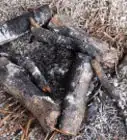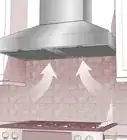This article was co-authored by wikiHow Staff. Our trained team of editors and researchers validate articles for accuracy and comprehensiveness. wikiHow's Content Management Team carefully monitors the work from our editorial staff to ensure that each article is backed by trusted research and meets our high quality standards.
There are 8 references cited in this article, which can be found at the bottom of the page.
wikiHow marks an article as reader-approved once it receives enough positive feedback. In this case, 88% of readers who voted found the article helpful, earning it our reader-approved status.
This article has been viewed 352,065 times.
Learn more...
A wood stove is a cozy way to heat up a room or an entire house, but using one can be frustrating if you’ve never done it before. The important things to remember are that you want a hot and fast fire, which is most efficient, and that fire needs oxygen in order to burn. It’s also important that you never leave a fire unattended, and never let children play near the wood stove.
Steps
Starting a Fire
-
1Read the manufacturer’s instructions. Many wood stoves come with specific directions from the manufacturer. You should read these before starting a fire in your wood stove to ensure that you're doing it properly and safely.[1]
- If you don’t have the manual for your stove, check the manufacturer’s website for a copy.
-
2Choose the right fuel. The best wood to use is seasoned wood that’s been drying for at least six months. Fresh wood contains too much water, and burning it will waste wood and money. Moreover, wet wood creates lots of smoke, and lots of creosote buildup.
- Creosote is a combination of chemicals made up of unburned fuel. This material can build up in your chimney and can lead to chimney fires.
- In terms of type of wood, you can choose between hardwood and softwood. Hardwoods that come from deciduous trees are denser and produce a hotter and longer burn, so they're ideal for cold winters. Softwoods are less dense, so they produce a cooler fire that’s great for cool spring or fall nights.[2]
- Fireplace wood can be found at many convenience stores, gas stations, hardware stores, grocery stores, garden centers, wood suppliers, and online.
Advertisement -
3Open all the controls. Oxygen is one of the things that a fire needs to burn, and many wood stoves have one or more levers you can use to control valves that allow air into the firebox. When you're starting a fire, you want all the valves fully open.[3]
- The primary source of air in many wood stoves is an air intake under the grate that provides oxygen to the fire bed. Many wood stoves will have a lever under or beside the door that controls this valve.
- Stoves may also have a secondary air valve above the firebox to provide oxygen to the flames, as well as a damper that opens and closes the flue.
-
4Put in some kindling. The best way to get a fire going in a wood stove is to start with small pieces of wood that can increase the temperature inside the firebox and get the flames burning. To set up the kindling:
- Crumple up five or six pieces of newspaper. Make sure the paper is dry.
- Place the newspaper balls into the center of the firebox.
- Lay up to 15 pieces of kindling on top of the paper. Make sure the pieces of wood are dry and small.[4]
-
5Light the fire. Use a lighter or match to ignite the newspaper under the kindling. Light the paper in a few places, starting at the back and working your way toward the front. This will prevent you from burning yourself as you pull your hand out of the firebox.
- Leave the door to the wood stove open for about five minutes to ensure the fire gets enough fresh air.[5]
- As the paper burns, it will ignite the kindling pieces on top, and this will get the fire going.
-
6Add some small logs. Once the kindling has begun to burn, you can add some smaller logs to the fire when the original flames start to die down. Add at least three small logs to the fire, one at a time to avoid smothering the flames.
- When you add wood to the fire, loosely stack the logs so that air can surround them as much as possible.
- Close the door most of the way, but leave it unlatched for about 15 minutes to prevent the fire from being smothered as it establishes itself.[6]
- Once the fire is fully established, after about 15 minutes, you can close and latch the door.
Keeping a Fire Burning
-
1Keep the door closed. Each time you open the door, it allows heat to escape from the stove, and this will result in a cooler and less efficient fire. Moreover, opening the door can allow smoke to escape into the room too, which is bad for people’s health.
- Once your fire is burning, the only time you should open the door is when you're adding more wood.[7]
- Open the door slowly to prevent a blast of fresh air from rushing into the stove and creating smoke.
- Keeping the door closed will also prevent sparks and embers from shooting out, and this is important because these can cause burns or start fires.
-
2Add larger logs. After you’ve added some small logs and let the fire establish itself, you can add larger logs to the fire. When the flames from the smaller logs start to subside, add about three larger logs to the fire.
- When those logs have burned down and are mostly embers with some visible flame, then it’s time to add more logs.[8]
- Don’t add more than five logs at a time. Adding too much wood at once will partially smother the fire and leave fuel unburned, and this leads to smoke and creosote buildup.
-
3Close the air intakes partially. After about 20 minutes, when the fire is established and burning well, reduce the amount of air going into the firebox. This will provide the fire with enough air to keep burning, but will stop it from blazing and burning too quickly.[9]
- Close the air valve levers so that they're open about one-third of the way. This includes the primary air, secondary air, and the damper.
- Never close the secondary air valve or damper completely. This can lead to tar, soot, and creosote buildup in the chimney.[10]
-
4Use fans to circulate the heat. The point of a wood stove is to heat a house, and you can help this process along by using fans to blow hot air from the stove around the house.[11]
- There are many stovetop fans you can buy that sit on top of the wood stove and blow the heat outward.
-
5Use proper safety precautions when using the wood stove. Fires are great for providing comfort and warmth, but fire can be dangerous and must be treated as such. There are many things you can do to keep your home and family safe, including:
- Keep children and pets away from the stove when there's a fire burning. The metal of the woodstove will be extremely hot, and can cause burns. The easiest way to keep kids and animals away from the stove is to install a fence or safety gate around it.
- Keep all combustible materials at least 3 feet (90 cm) away from the wood stove. This includes fuel, kindling, papers and books, and furniture.
- Have a fire extinguisher installed in the same room as the wood stove.
- To have an overnight fire, open the air valves and add some large pieces of hardwood to the fire. Let the fire burn for about 25 minutes, and then close the valves to their regular spot. This will prevent smouldering, which leads to smoke and creosote buildup.[12]
- Let the fire die out naturally rather than throwing water on it. Once the fire has died down and there are only embers left, you can leave the fire to die out on its own.
Cleaning and Maintaining the Wood Stove
-
1Burn seasoned wood only. For the health and safety of your home and family, and the maintenance of your wood stove, you shouldn’t burn anything but seasoned wood in your stove. You can use plain paper or newspaper as kindling, but don’t burn things like:[13]
- Wood that’s wet, green, painted, or pressure treated
- Garbage
- Plastic
- Cardboard
- Coal
- Particle board or plywood
- Wood pellets
- Gas, lighter fluid, or any other fuel
-
2Clean out the ashes regularly. When the ashes build up under the grate or in the bottom of the firebox, you should clean them out. Too much ash in the bottom will impede the airflow, meaning your fire won’t get the oxygen it needs. To clean the ashes, use a shovel or brush to sweep the ashes into a metal bucket. Take the ashes outside immediately and add them to your garden or compost.
-
3Clean the firebox weekly. When you're using the wood stove on a regular basis, clean inside the firebox once a week. To clean it, scrub the inside with a stiff-bristled brush to remove soot and other residue.
- When you’ve scrubbed the inside, vacuum out any ash and soot from around the base of the stove.
-
4Have the stove inspected annually. To make sure your wood stove is properly cleaned and to prevent chimney fires, call in a professional chimney sweep once a year. This person can also inspect the stove, pipes, and other components for damage and corrosion.
- The best time to have your chimney swept is before summer, because heat and humidity can mix with carbon residue and create acids that eat away at your wood stove components.
- You should also inspect your wood stove regularly for rust, cracks, and other signs of damage.[16]
Community Q&A
-
QuestionIs a wood burning stove safe on a park home site?
 Community AnswerYes, they're safe everywhere, provided they're installed correctly and cleaned religiously. However, the park may not allow them. So, obtain permission and any specific guidelines first.
Community AnswerYes, they're safe everywhere, provided they're installed correctly and cleaned religiously. However, the park may not allow them. So, obtain permission and any specific guidelines first. -
QuestionI have a Timberline wood stove, and I need to take down the stove pipe to clean it. How do I get that down? It has two 90 degree angles in it.
 Community AnswerIf you've never done it before, then call a chimney cleaning company and have them clean it. There are many different types of piping and connecting methods. Pay close attention to what they do to handle yourself in the future. The entire pipe must be cleaned regularly, which is determined by your frequency of use. Ask for a suggested cleaning interval based on your use and types of wood or other fuel used.
Community AnswerIf you've never done it before, then call a chimney cleaning company and have them clean it. There are many different types of piping and connecting methods. Pay close attention to what they do to handle yourself in the future. The entire pipe must be cleaned regularly, which is determined by your frequency of use. Ask for a suggested cleaning interval based on your use and types of wood or other fuel used. -
QuestionTo minimize the release of hot gases, do I have the damper fully open or partly closed?
 David WebbCommunity AnswerWhen you first light the fire, it is best to have the damper fully open. Once the fire is burning consistently, set the damper at about halfway. This allows enough oxygen for the fire to burn hot without flaring and burning too quickly. If you want the fire to burn overnight, you can put some larger wood on and get it burning properly, then close the damper to slow the burn right down. In the morning, you should be able to rake out the coals and add some kindling to get it going again.
David WebbCommunity AnswerWhen you first light the fire, it is best to have the damper fully open. Once the fire is burning consistently, set the damper at about halfway. This allows enough oxygen for the fire to burn hot without flaring and burning too quickly. If you want the fire to burn overnight, you can put some larger wood on and get it burning properly, then close the damper to slow the burn right down. In the morning, you should be able to rake out the coals and add some kindling to get it going again.
References
- ↑ http://www.bcairquality.ca/topics/stove-burning-practices.html
- ↑ http://www.lovetheoutdoors.com/types-of-firewood-softwood-vs-hardwood/
- ↑ http://www.stovesonline.co.uk/lighting-and-using-a-woodburning-stove.html
- ↑ http://www.bcairquality.ca/topics/stove-burning-practices.html
- ↑ https://www.napoleon.com/en/ca/fireplaces/blog/how-start-wood-fire
- ↑ http://www.cottagetips.com/tips/wood-stove-tips/
- ↑ https://www.youtube.com/watch?v=pC67gBhWu0Y
- ↑ http://www.stovesonline.co.uk/lighting-and-using-a-woodburning-stove.html
- ↑ https://www.napoleon.com/en/ca/fireplaces/blog/how-start-wood-fire
- ↑ http://www.telegraph.co.uk/finance/property/advice/10574430/Top-tips-for-using-a-wood-burning-stove-this-winter.html
- ↑ http://www.bcairquality.ca/topics/stove-burning-practices.html
- ↑ http://jotul.com/int/guides/eight-tips-for-burning-wood
- ↑ http://www.bcairquality.ca/topics/stove-burning-practices.html
- ↑ http://www.cottagetips.com/tips/wood-stove-tips/
- ↑ https://www.napoleon.com/en/ca/fireplaces/blog/how-start-wood-fire
- ↑ http://www.cottagetips.com/tips/wood-stove-tips/
About This Article
To use a wood stove, start by opening the damper valve underneath the grate so that the fire gets enough oxygen. Then, put some crumpled newspaper in the middle of the firebox, followed by 15 pieces of small, dry kindling on top. Next, use a lighter to ignite the newspaper, and leave the stove door open to give the fire air. Once the kindling is burning, add some small logs to the fire and close the door after about 15 minutes. After another 20 minutes, close the damper about halfway so that the fire doesn’t burn too quickly and will last longer. For tips on how to clean and maintain your wood stove, keep reading.
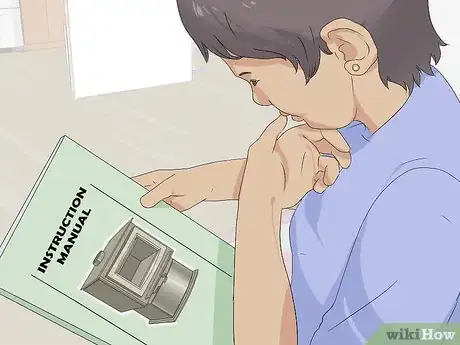
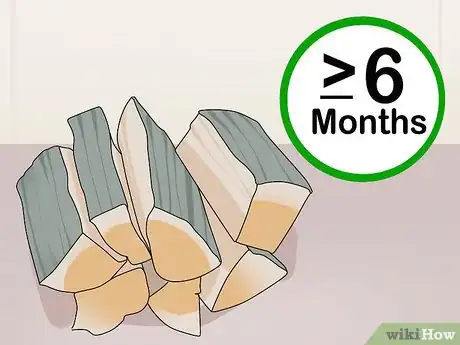
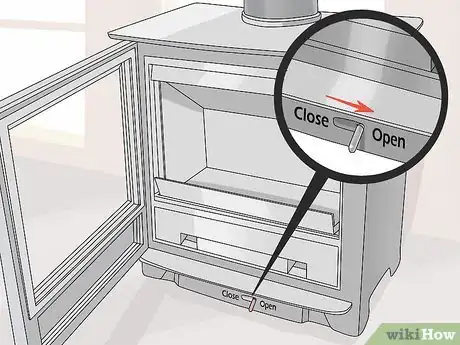
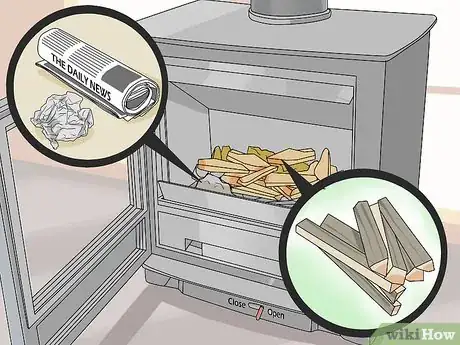
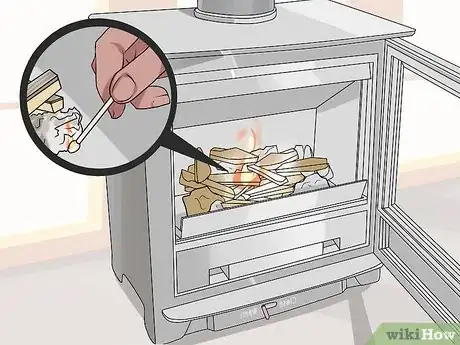
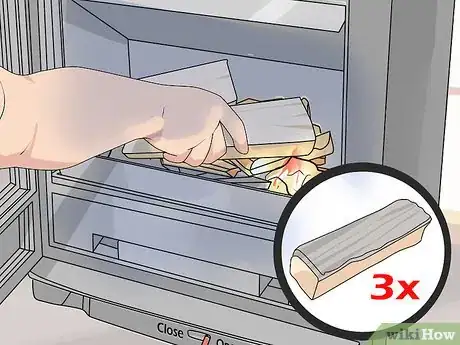
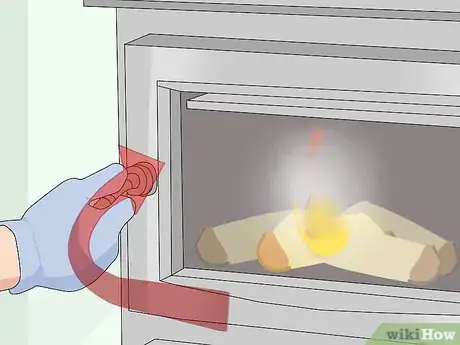
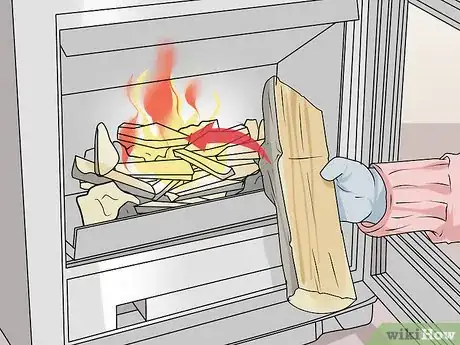
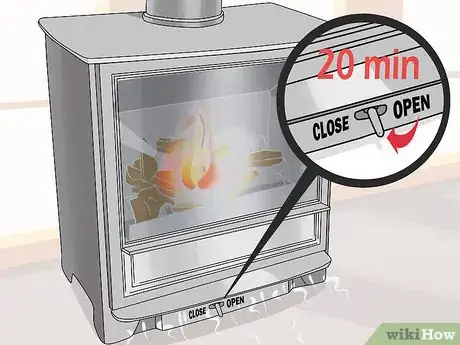
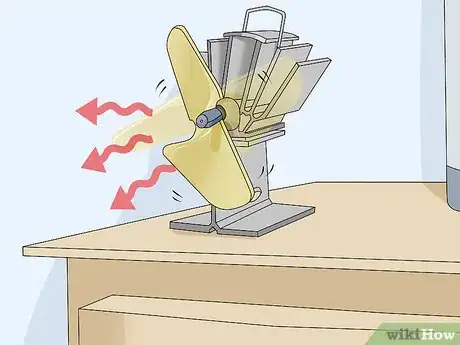
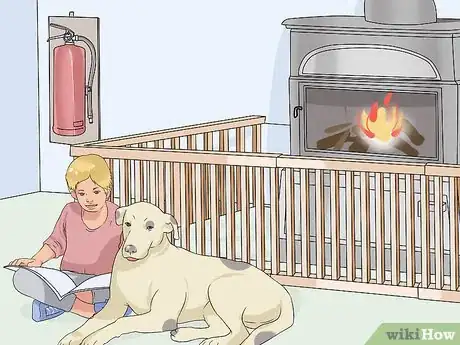
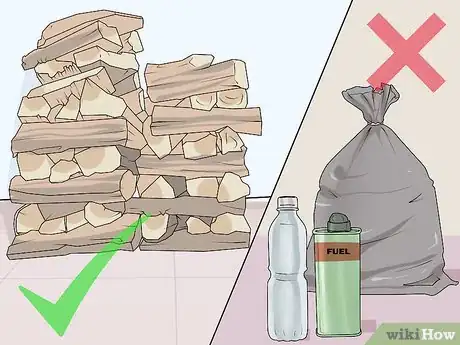
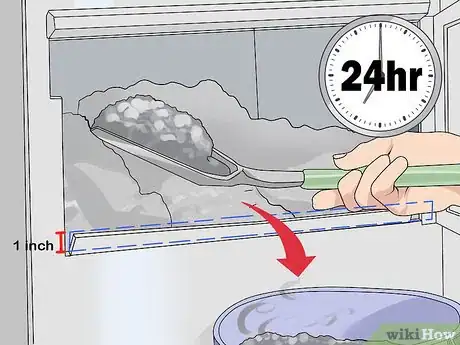
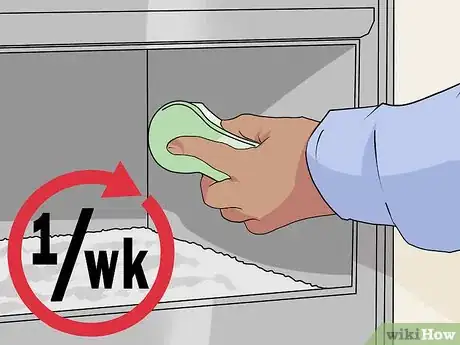
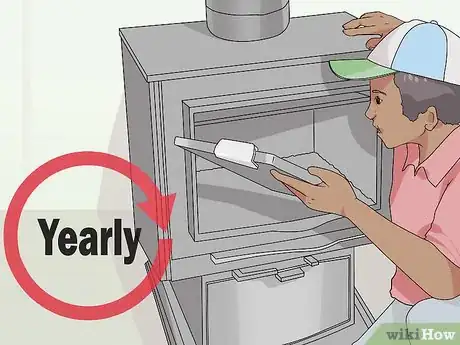
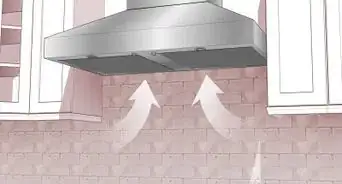

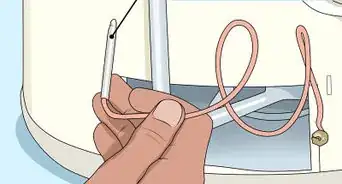

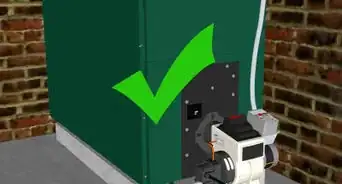


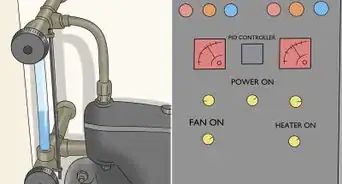
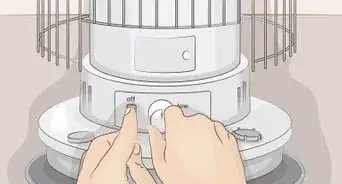


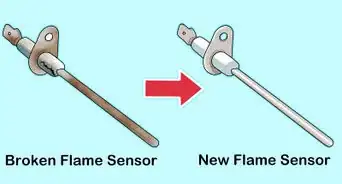
-Step-34.webp)











